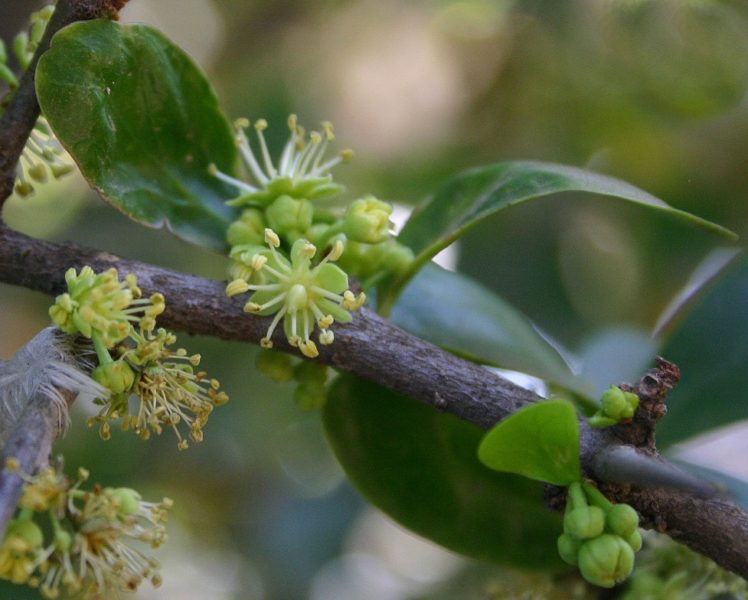In the framework of the inventory of Centers of Plant Diversity (IDV), developed as part of the Med-O-Med network, we have updated the information and news of the National Arboretum of Tunis, a center for biodiversity protection, research and awareness, located in the country’s capital.
In this article we offer a brief look at its development and aims, but also at the general idea of arboretums and the objectives they pursue.
Brief history of the creation of the arboretum
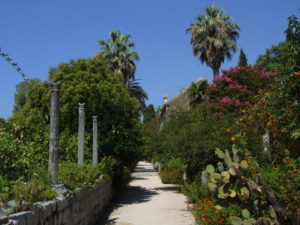
The term arboretum comes from the Latin arborētum and was first used by the Scottish botanist J.C. Loudon in 1838 in his encyclopedic book Arboretum et Fruticetum Britannicumes.[1] The concept designates a place where trees, shrubs, and sometimes herbaceous plants are grown for scientific and educational purposes. An arboretum can be a collection in itself or part of a botanical garden, so most of them are found in themed garden areas.
Even though the concept is quite modern, the idea was established long ago. Historical studies have shown that already in Ancient Egyptian times, pharaohs planted exotic trees and cultivated them, as was the case with the ebony from Sudan or the pines and cedars from Syria.[2]
The oldest modern arboretum known was founded in the Croatian region of Dubrovnik in the 15th century. Although its exact date of foundation is unknown, historians have evidence of the construction of an aqueduct to irrigate it in 1492[3]. Today, it is known as the Arboretum of Trsteno.
However, it was from the 19th century onwards that many cities began to create arboretums in order to protect the natural heritage and plant diversity.
What is an arboretum used for?
The main purposes of an arboretum, common to those of botanical gardens, are:
- conservation: arboretums usually aim to preserve and safeguard endangered species, with ex situ (type of conservation out-side of their natural habitats) and in situ (on-site preservation) conservation strategies.
- teaching and public education.
- research in the domain of dendrology, or the science of trees[4].
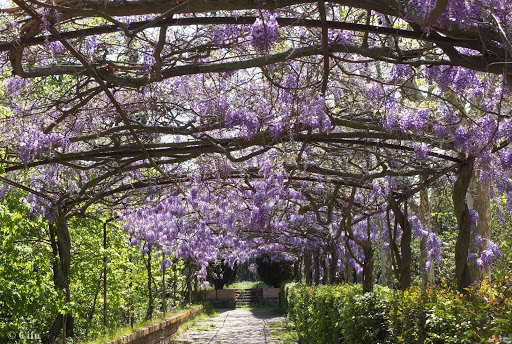
According to the objectives and programs of the different arboretums, the following categories can be distinguished[5]:
- the arboretum of general collections: its objective is to have a collection that gathers the maximum number of species from all over the world, which are represented by a limited number of specimens (usually one).
- the forest arboretum: it houses a collection with a smaller number of species, but each species is represented by a larger number of individuals, from 25 to 100 or even more. Its mission is to test and compare the forestry behavior of new species introduced in a given region.
- the thematic arboretum: it brings together several varieties of the same species. The objective is to constitute a conservatory of the diversity of a species.
- the landscaped arboretum: it has an aesthetic purpose
In addition to these main objectives, there is now a growing interest in tourism, due to their beauty and the possibilities for leisure and relaxation offered by these areas, which have turned them into frequently visited locations.
The National Arboretum of Tunis: from botanical garden to arboretum
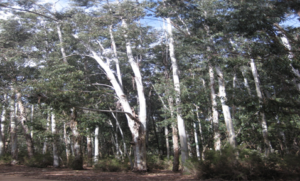
This is the case of Tunisia and its national arboretum, which has been working for more than 100 years to protect endangered species and has been performing an essential role in the conservation of plant diversity.
Its history begins in 1891, when the “Test and Acclimatization Garden of Tunis” was founded with the aim of having a plant collection and conducting acclimatization trials of exotic plant species.[6] It was the first garden of its kind in Tunisia and marked the beginning of the development of agronomic, horticultural and botanical institutions in the country. This trend led to the creation of the Tunisian Botanical Service in 1913[7]. This institution, known today as the National Institute of Agronomic Research of Tunisia[8], founded the “Collections Park” in 1913. Over the years, this park became more specialized until it was transformed into the National Arboretum of Tunis that we know today.
With a total surface area of approximately 8 hectares in the northern urban center of Tunis, the arboretum has been classified as a Nature Reserve since 1996, in accordance with the Tunisian Forest Code. This green space is home to about 700 plant species and offers the inhabitants of the urban area of the Grand Tunis a nearby space in which to stroll and discover a great diversity of trees from all continents.
Since 1996, when the National Urban Parks Program was developed, the arboretum has been managed by the National Environmental Protection Agency (ANPE). Within the framework of this program, several strategies, whether scientific, conservation or educational, have been implemented:
- Scientific and environmental protection programs: the ANPE has several scientific programs to fulfill its policy-making mission, in terms of pollution control and environmental protection. It has air, water and soil quality monitoring networks, as well as a unit in charge of the scientific monitoring of natural ecosystems and sensitive sites requiring special monitoring of fauna, flora etc., such as the arboretum.[9]
This green space is home to about 700 plant species and offers the inhabitants of the urban area of the Grand Tunis a nearby space in which to stroll and discover a great diversity of trees from all continents.
Within the framework of the National Urban Parks Program, the ANPE also aims at protecting and transforming peri-urban forests into recreational areas, of a cultural and ecological nature.[10] This is the case of the Tunis arboretum. This involves programs for the conservation of plant diversity.
- Conservation programs: The Tunis general collections Arboretum has an ex situ and in situ conservation program. If we walk through this green space, we can find peculiar species from all over the world, each with different uses and benefits.
The Dovyalis caffra, native to southern Africa, is for instance, an important tree for several reasons. Its little-known fruit has the potential to improve nutrition, food-security and promote a sustainable rural development, thus enabling land protection.[11]
The Pistacia atlantica, native to the geographical area of North Africa up to the Iranian plateau, plays an important role in combating desertification and soil erosion. It is therefore widely used in the reforestation of arid areas[12]. In addition, it has an important pastoral interest and a role in biodiversity protection, as it is an important refuge for rare and endemic Mediterranean species. Its conservation and observation are, therefore, important for countries such as Tunisia, strongly threatened by desertification.
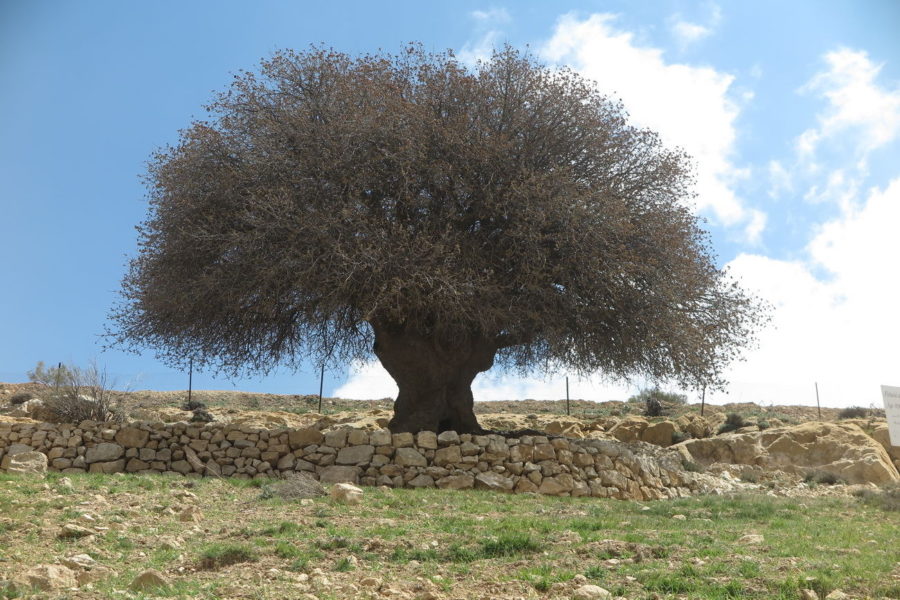
The araar (Tetraclinis articulata), endemic to the Mediterranean world, has also many uses, both for humans and nature. It is both a medicinal plant rich in essential oils, as well as a valuable tree for fixing dunes, while its wood was widely used in ancient times to make luxurious tabletops.[13]
The arboretum also takes us on a journey to the Asian continent with the Melia azedarach, or tree of paradise. It is often used in gardening as a shade tree, as well as for its abundant and aromatic flowering. Its virtues were already known in the Iberian Peninsula centuries ago, and the Andalusian agronomist Ibn Al-Awwam, in the Almohad period, mentions it in his treatise Kitab al-Filaha (The Book of Agriculture)[14].
In addition to taking us on a journey with its multitude of trees and participating in the protection of nature’s diversity, the arboretum develops educational programs for its visitors.
- Educational and recreational programs: the ANPE, together with the arboretum, has developed a project to produce guidance material: a guide and an awareness-raising brochure on the species it holds (characteristics, names, original habitat and age of the species). It also hopes to create an ecological trail within the arboretum to promote knowledge about botany and the importance of flora conservation.
Since its creation, the National Arboretum of Tunis has always contributed to protect and preserve the natural heritage and to teach society about the beauty of nature.
These ideas are part of the ANPE’s environmental education mission, which has already carried out several projects to raise awareness, train and support local initiatives. In 2016, the Agency organized a national competition on the environment for schools. It has also produced teaching materials and educational kits for schools, such as explanatory brochures related to plant diversity, or mammals and birds of the Ichkeul National Lake….[15]
Since its creation, the National Arboretum of Tunis has always contributed to protect and preserve the natural heritage and to teach society about the beauty of nature. These reasons support its inclusion in our list of Centers of Plant Diversity. We hope that our collaboration will be fruitful and that it will allow us to share experiences, knowledge and develop joint actions in the future.
Tristan Semiond – FUNCI
References
[1] Gardner, Helen; Kleiner, Fred; Mamiya, Christin J. (2008). Gardner’s Art Through the Ages: A Global History. Cengage Learning EMEA. p. 67
[2] Fred S. Kleiner (2009). “Gardner’s Art Through the Ages”, Thomson/Wadsworth.
[3] Stewart, James (2006). Croatia. New Holland Publishers. p. 297
[4] André Lawalrée, « Histoire et rôle des jardins botaniques », Ensemble d’Écoles Supérieures et de Facultés Catholiques.
[5] ANPE, Arboretum de Tunis: http://www.anpe.nat.tn/Fr/arboretum-de-tunis_11_162
[6] https://jardinsdessai.wixsite.com/accueil/blank-gcat6
[7] https://jardinsdessai.wixsite.com/accueil/blank-gcat6
[8] ANPE, Arboretum de Tunis: http://www.anpe.nat.tn/Fr/arboretum-de-tunis_11_162
[9] ANPE, Direction du Suivi des Milieux Environnementaux, http://www.anpe.nat.tn/Fr/presentation_11_122
[10] Journal officiel de la République tunisienne nº 79, 4 octobre 2005, p. 2589.
[11] National Research Council (19 de enero de 2010). « Kei Apple». Lost Crops of Africa: Volume III: Fruits”. National Academies Press
[12] Ozenda, P. (1991). Flore et Végétation du Sahara. París:CNRS.
[13] Pline l’ancien, Histoire naturelle, Livre 13, Edition Emile Littré, Dubochet, Paris
[14] GARCÍA SÁNCHEZ, E., «Ibn al-Awwam, Abu Zakariya´», Biblioteca de al-Andalus, vol. 2, pp. 444-451, Fundación Ibn Tufayl de Estudios Árabes, Almería, 2009
[15] ANPE, Sensibilisation : http://www.anpe.nat.tn/Fr/sensibilisation_11_94
This post is available in: English Español

